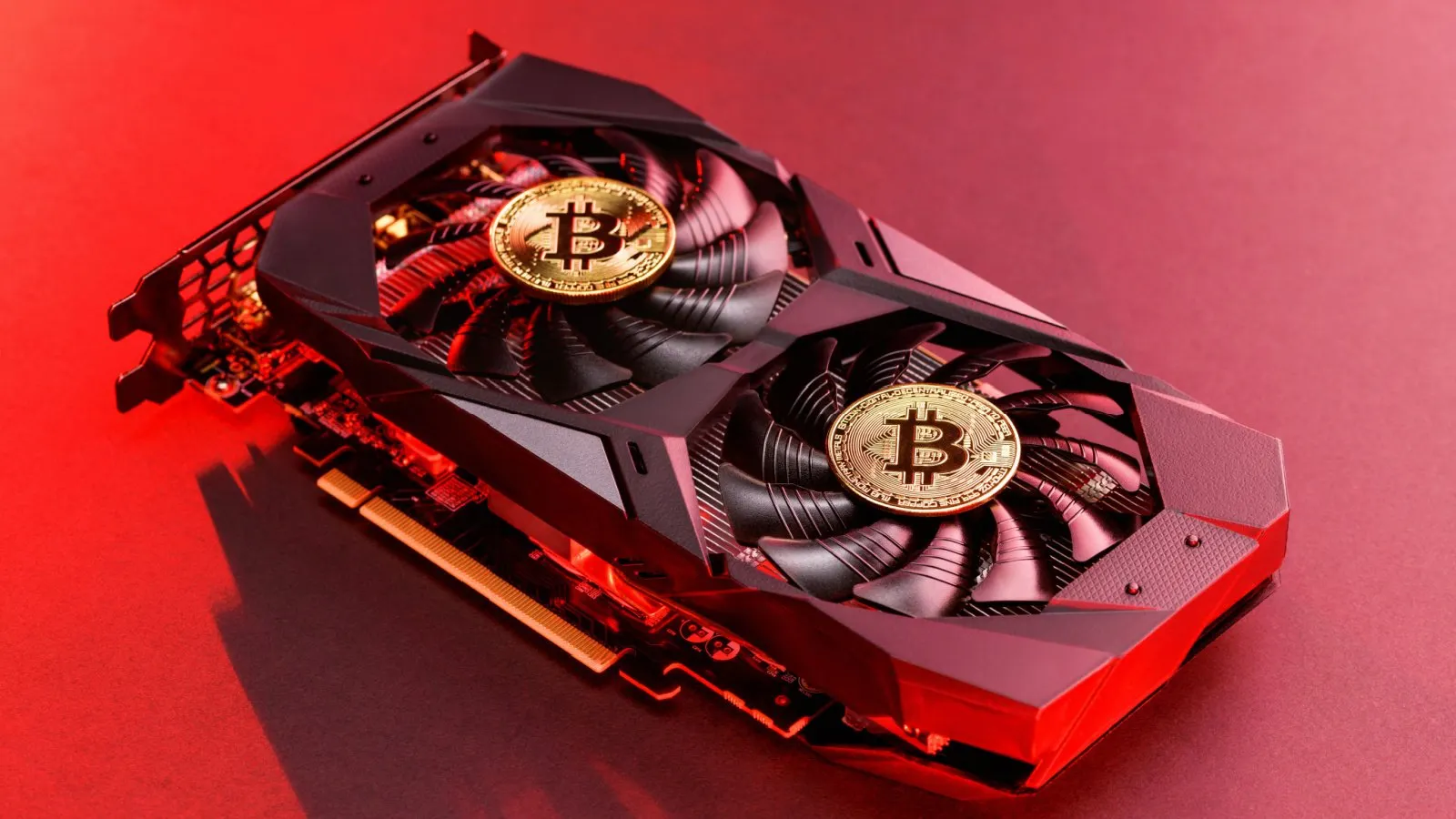BREAKING: #Bitcoin block 788695 contained transaction fees greater than the block subsidy.
6.7 BTC transaction fees + 6.25 BTC subsidy
This is a the first time in history this has ever occurred due to competitively high block space demand. pic.twitter.com/J7IcwzIVKE
— Joe Burnett (🔑)³ (@IIICapital) May 7, 2023
Coin Prices
BTC
$93,823.00
2.91%ETH
$3,193.50
2.04%XRP
$2.17
3.80%BNB
$905.66
2.17%SOL
$136.06
0.99%USDC
$1.00
0.06%STETH
$3,193.49
2.06%TRX
$0.292338
-0.75%DOGE
$0.148829
-1.46%ADA
$0.410134
3.18%FIGR_HELOC
$1.018
0.00%BCH
$651.67
1.79%WSTETH
$3,911.65
2.16%WBT
$58.57
1.70%WBTC
$93,700.00
3.03%WBETH
$3,477.25
2.26%WEETH
$3,470.33
2.24%USDS
$0.999793
0.02%LINK
$13.70
1.80%BSC-USD
$0.999875
0.05%LEO
$9.06
1.29%WETH
$3,199.75
2.25%ZEC
$491.84
-2.97%XMR
$431.83
-0.32%XLM
$0.236366
1.08%CBBTC
$93,878.00
2.94%SUI
$1.71
0.40%LTC
$83.40
1.20%USDE
$1.002
0.32%HYPE
$26.37
1.58%AVAX
$14.23
0.88%HBAR
$0.126986
1.46%CC
$0.144058
-3.49%SHIB
$0.00000885
-1.53%WLFI
$0.172377
1.89%TON
$1.90
2.39%SUSDS
$1.086
0.44%USDT0
$0.999269
-0.01%CRO
$0.10669
0.73%UNI
$5.90
-0.26%PYUSD
$0.99986
0.02%DOT
$2.19
1.15%MNT
$1.082
1.86%SUSDE
$1.21
0.09%USD1
$1.001
0.03%PEPE
$0.00000686
-1.56%RAIN
$0.00815173
2.22%M
$1.56
-1.77%AAVE
$168.76
2.22%TAO
$265.55
-0.22%BGB
$3.57
0.76%OKB
$114.82
0.67%XAUT
$4,437.19
2.44%NEAR
$1.76
1.67%USDF
$0.996855
-0.25%ETC
$13.10
2.21%ENA
$0.248051
-0.57%JITOSOL
$170.10
0.64%WETH
$3,190.30
2.09%ASTER
$0.779054
0.11%ICP
$3.31
3.15%PI
$0.212244
-0.67%BUIDL
$1.00
0.00%SOL
$135.92
0.87%PAXG
$4,451.84
2.19%WLD
$0.604184
0.83%HASH
$0.02979373
1.42%HTX
$0.00000168
-0.49%JLP
$4.76
0.97%USYC
$1.11
0.00%USDG
$0.999599
0.00%KCS
$11.26
1.78%APT
$1.95
1.59%SKY
$0.063554
2.10%BNSOL
$148.64
0.97%SYRUPUSDC
$1.15
0.12%NIGHT
$0.084334
-7.64%ONDO
$0.442314
0.60%PUMP
$0.00237055
1.09%KAS
$0.051039
4.63%RLUSD
$1.001
0.09%RETH
$3,684.59
1.97%BFUSD
$0.99921
-0.02%WBNB
$906.73
2.31%POL
$0.122663
1.79%USDC
$1.00
0.03%ARB
$0.217756
1.17%GT
$10.54
-0.26%ALGO
$0.137387
1.53%RSETH
$3,397.61
2.24%FIL
$1.63
8.83%ATOM
$2.35
1.33%RENDER
$2.21
22.05%QNT
$78.22
-1.71%TRUMP
$5.52
1.92%VET
$0.01226765
1.93%FBTC
$94,025.00
3.09%XDC
$0.054358
2.57%BONK
$0.0000118
-3.15%JAAA
$1.021
0.06%LBTC
$93,979.00
2.79%WSTETH
$3,883.12
1.58%SOLVBTC
$93,676.00
3.28%FLR
$0.01209497
3.93%NEXO
$0.967489
2.14%MYX
$4.87
-17.65%LSETH
$3,358.67
0.25%USDD
$0.999513
-0.01%USDTB
$1.003
0.35%OUSG
$113.85
0.00%SEI
$0.125001
-0.47%USTB
$10.95
0.02%PENGU
$0.01257565
-1.76%WM
$0.999665
-0.02%WBTC
$93,805.00
3.16%USDC.E
$0.999696
-0.00%VIRTUAL
$1.12
23.51%LIT
$2.94
13.34%METH
$3,463.61
1.96%SYRUPUSDT
$1.11
0.01%IP
$2.11
-4.14%EZETH
$3,405.88
1.86%WFLR
$0.01211397
4.39%CLBTC
$90,486.00
0.00%JUP
$0.218278
0.27%CAKE
$2.07
1.54%USDY
$1.10
-1.31%STX
$0.375036
13.75%BDX
$0.089847
-1.54%FET
$0.288656
11.45%USDAI
$1.00
-0.01%OSETH
$3,367.52
2.25%WETH
$3,191.23
1.90%JUPSOL
$157.42
0.53%MORPHO
$1.17
-0.48%DAI
$0.999716
-0.01%OP
$0.322364
0.88%CRV
$0.426733
1.15%KHYPE
$26.65
1.72%SPX
$0.644245
-0.69%XTZ
$0.547168
-0.09%CTM
$0.128875
1.71%TBTC
$94,375.00
3.42%LDO
$0.650155
2.38%USD0
$0.99822
0.06%FLOKI
$0.00005671
-0.55%AERO
$0.600363
4.05%EUTBL
$1.22
-0.26%DASH
$43.15
-0.77%WETH
$3,207.94
2.51%INJ
$5.24
1.98%ETHFI
$0.788569
0.33%GTETH
$3,200.62
2.21%FDUSD
$0.999204
0.06%TIA
$0.581619
2.37%GHO
$0.999978
0.04%TUSD
$0.997682
-0.03%FTN
$1.088
-0.09%LIQUIDETH
$3,453.46
2.24%ETHX
$3,449.78
2.28%MSOL
$183.04
0.56%CHZ
$0.0453956
0.73%STRK
$0.091016
1.83%WAPE
$0.223846
1.18%BTT
$0.00000045
7.50%IOTA
$0.103899
2.79%GRT
$0.04070365
-0.20%2Z
$0.12479
-2.72%BSV
$21.50
14.93%AB
$0.00449231
-0.25%SBTC
$93,730.00
3.44%ENS
$10.96
5.52%CFX
$0.08032
0.71%SYRUP
$0.360755
-1.58%CBETH
$3,565.79
1.79%JST
$0.0412788
4.05%USDB
$0.998932
-0.14%STKAAVE
$167.80
2.22%WIF
$0.398939
-2.74%PYTH
$0.068855
1.85%STEAKUSDC
$1.11
0.07%XPL
$0.190158
-5.76%TWT
$0.92673
2.16%SUN
$0.02003733
0.05%RIVER
$19.71
60.43%FARTCOIN
$0.385121
2.66%TEL
$0.00400305
-0.56%DOGE
$0.148811
-1.55%KAIA
$0.064654
6.10%PIPPIN
$0.364438
-25.82%PENDLE
$2.24
1.17%GNO
$139.79
0.70%NFT
$0.00000037
1.99%BTC.B
$93,557.00
2.62%EURC
$1.17
-0.20%OHM
$21.99
1.14%CRVUSD
$1.004
0.42%WSTX
$0.349284
16.91%S
$0.092014
-0.53%CUSD
$1.005
0.54%SAVAX
$17.63
0.86%JASMY
$0.00699022
0.55%GALA
$0.00735215
1.80%BAT
$0.23004
3.72%KAU
$142.88
3.84%SAND
$0.123275
0.51%EETH
$3,169.46
1.25%WEETH
$3,469.22
2.38%VSN
$0.090462
0.55%BUSD
$1.005
0.24%RAY
$1.16
3.34%USR
$1.00
0.07%MON
$0.02876135
-0.40%THETA
$0.308403
4.15%UBTC
$93,722.00
2.78%USX
$0.99905
-0.02%WSTUSR
$1.13
0.22%FRXETH
$3,186.36
2.20%DCR
$17.42
-1.39%HNT
$1.60
2.02%A
$0.181665
2.40%WETH
$3,184.68
1.65%ZK
$0.03366807
0.00%STABLE
$0.01588927
-5.13%H
$0.157174
-10.49%KAG
$76.84
4.83%ZRO
$1.40
-0.33%CMETH
$3,468.26
2.10%GTBTC
$94,099.00
2.99%ASBNB
$962.14
2.40%FRAX
$0.993563
0.07%NEO
$3.92
1.57%MERL
$0.250856
-1.14%BBTC
$94,344.00
4.33%WHYPE
$26.37
1.53%UDS
$2.64
-0.03%ZBCN
$0.00278346
8.13%MANA
$0.140091
1.42%WETH
$3,195.57
1.91%AR
$4.07
2.03%BTSE
$1.63
-1.58%JTRSY
$1.09
0.02%BORG
$0.265413
-0.40%MWC
$23.45
-0.96%COMP
$26.66
0.22%WSTETH
$3,913.94
2.22%XCN
$0.00696433
43.06%XEC
$0.00001253
6.84%
